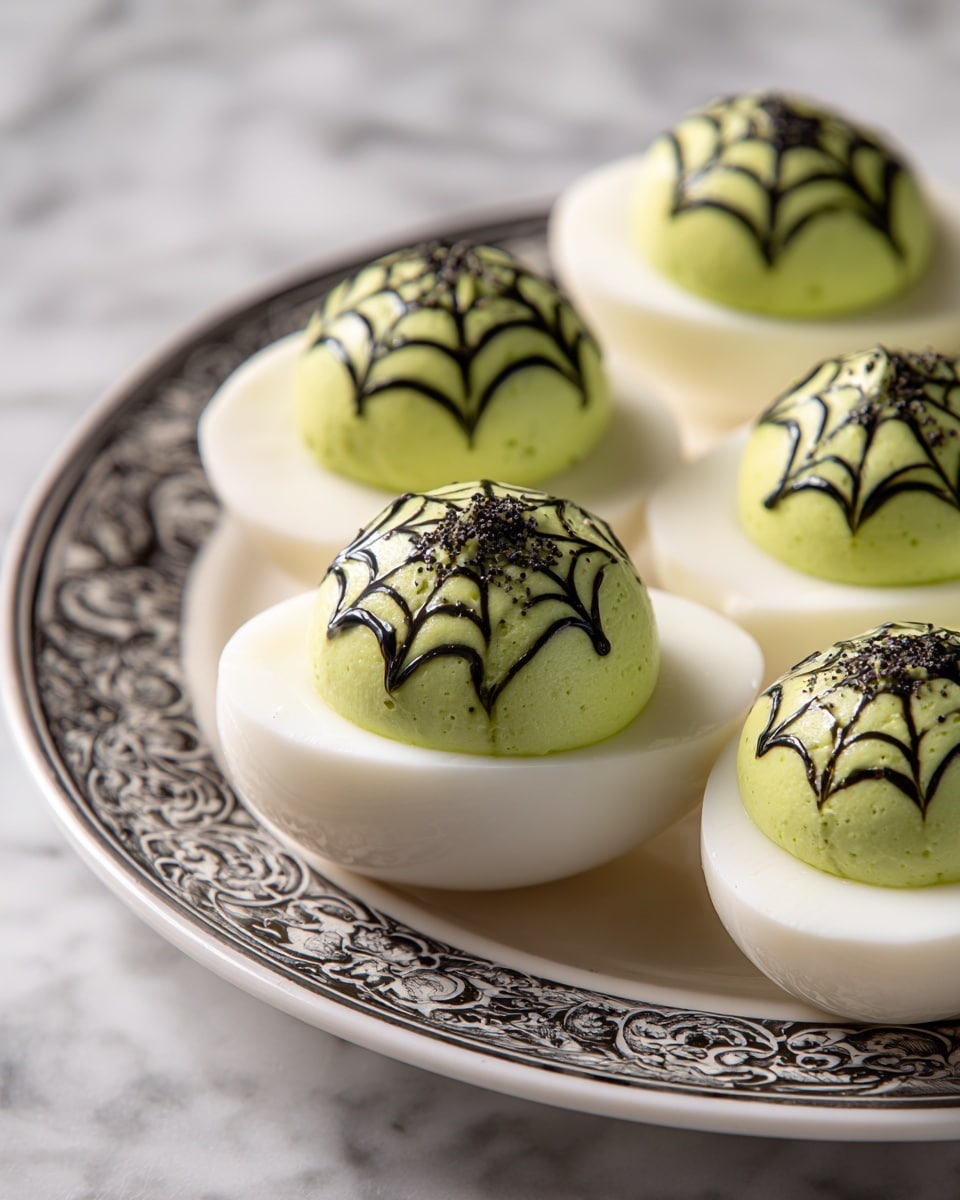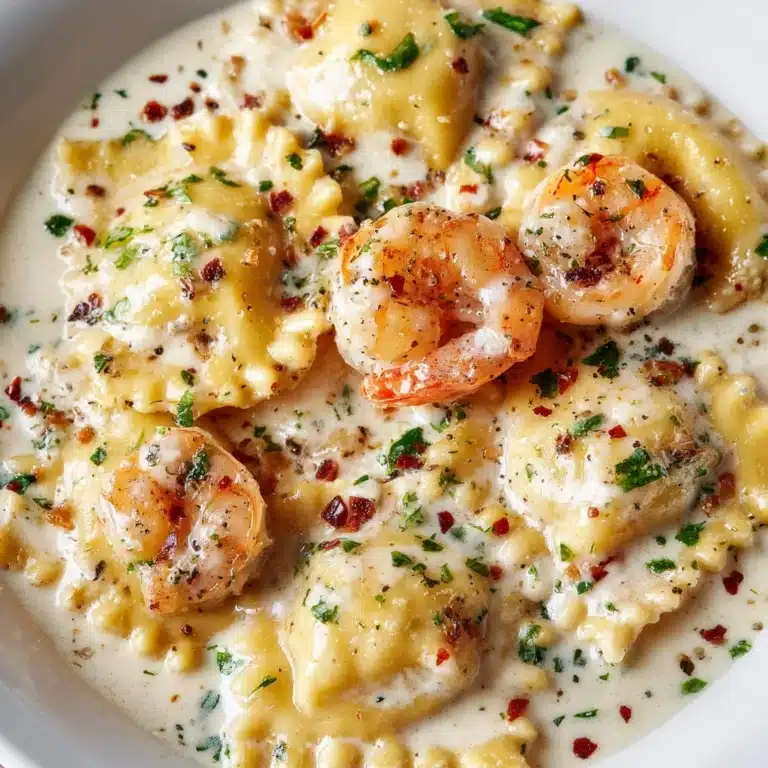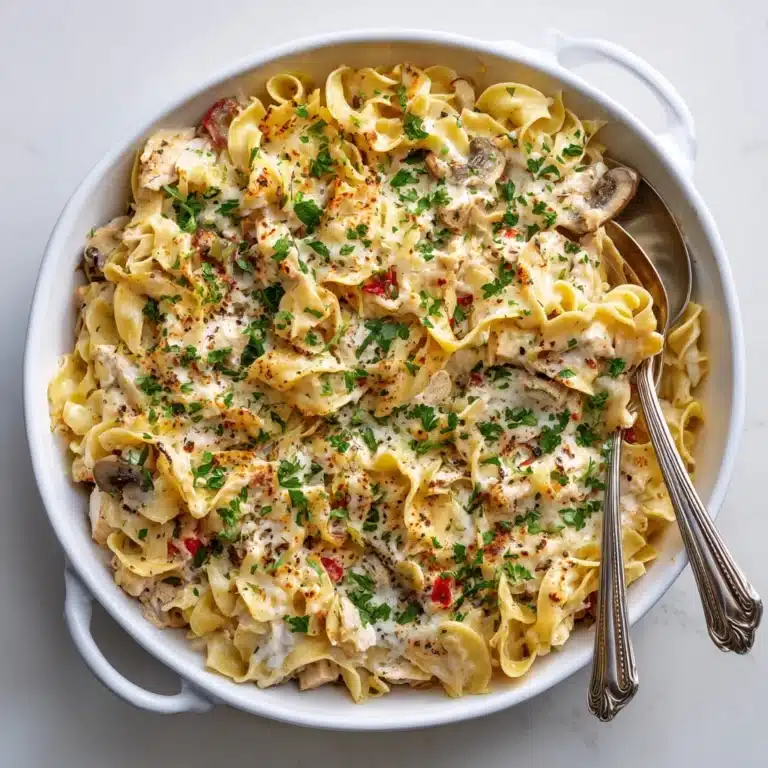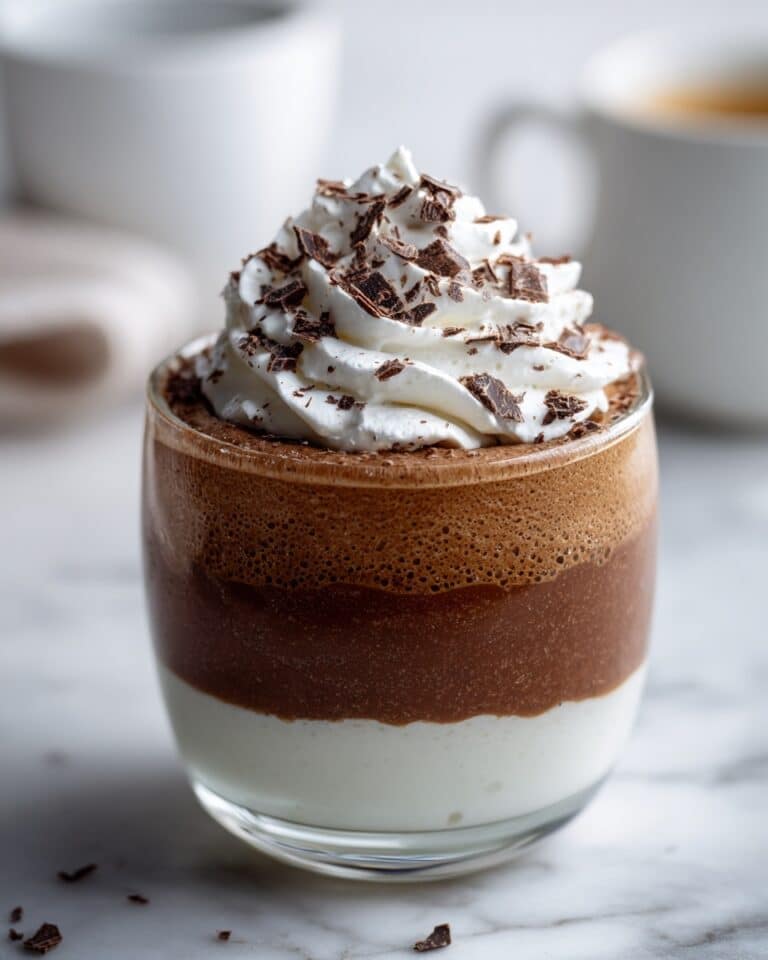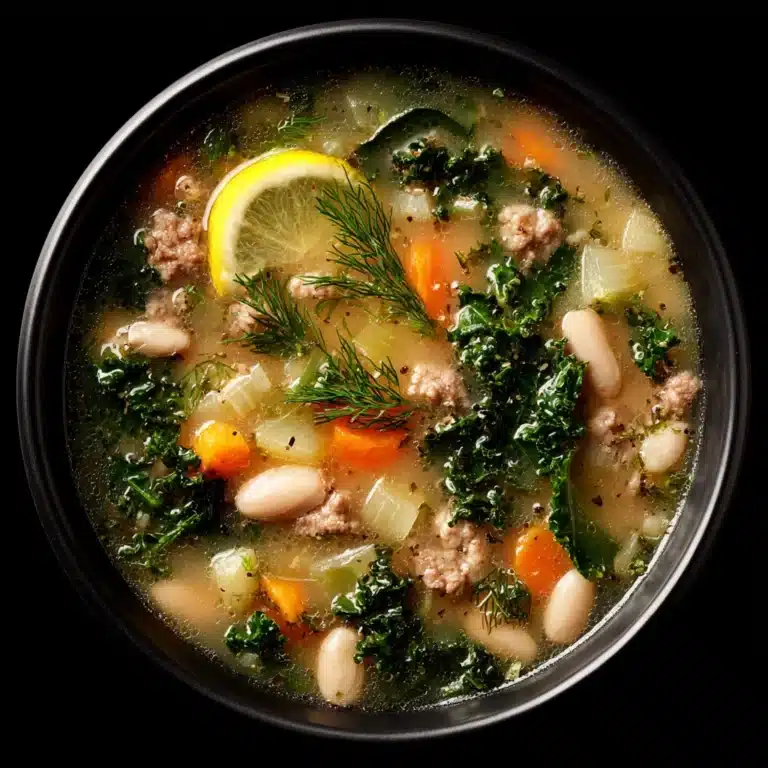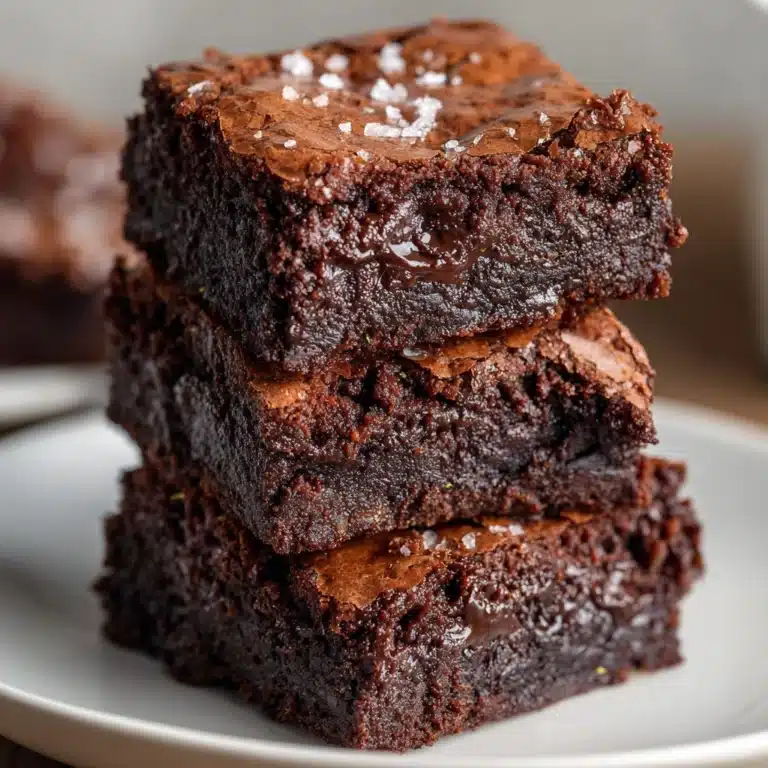If you are looking to add some eerie elegance to your next Halloween party, the Spooky Spiderweb Deviled Eggs Recipe is your secret weapon. This fun and festive twist on the classic deviled egg features a mesmerizing marbled black spiderweb effect on the egg whites that’s created by a clever dyeing technique. Paired with that creamy, tangy deviled egg filling, this recipe brings both visual wow and delicious flavor to your table. Whether you want to impress your guests or delight the kids, this spooky yet scrumptious appetizer will be unforgettable.
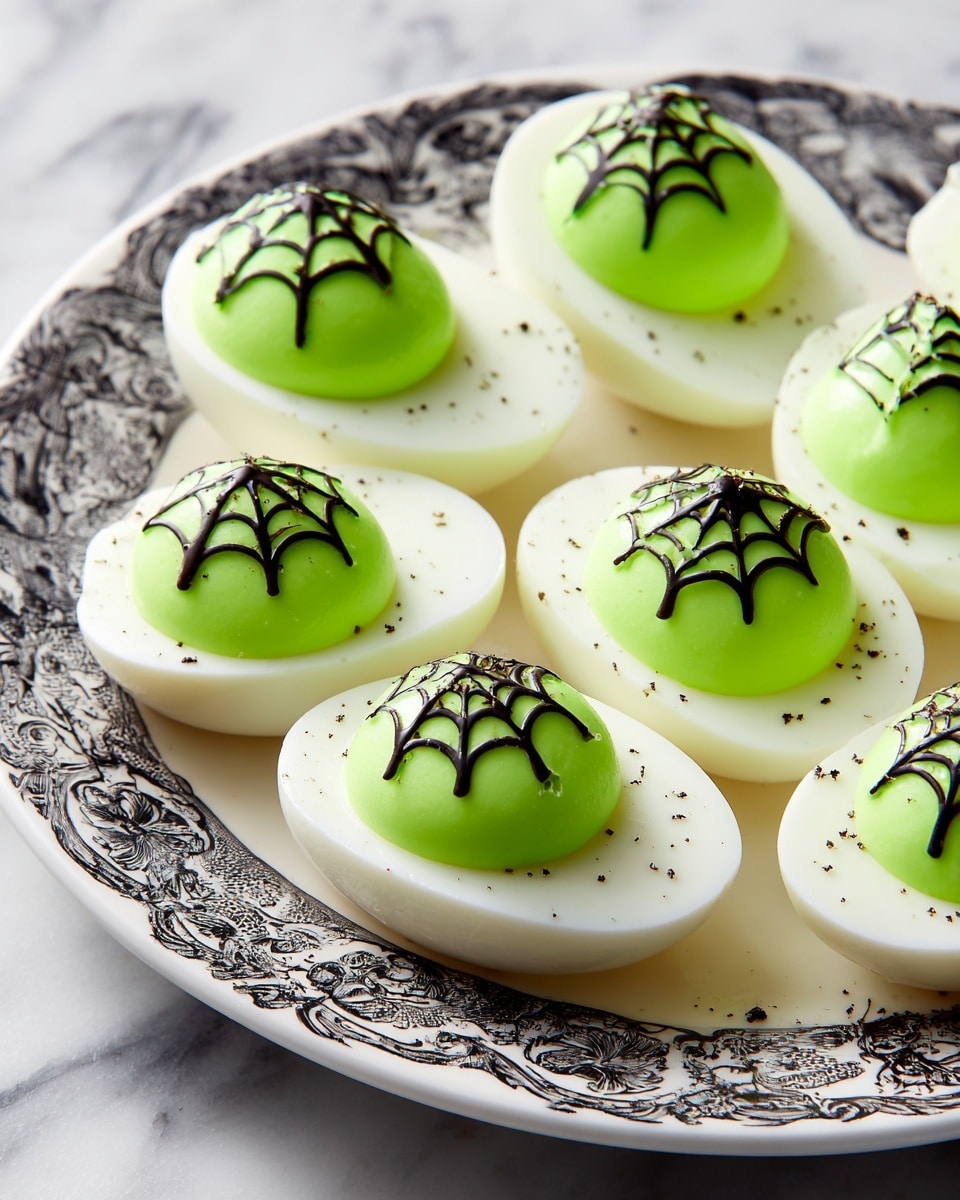
Ingredients You’ll Need
It’s amazing how a handful of simple, everyday ingredients can come together to create such a striking Halloween treat. Each component plays its part, from the eggs that form the base to the seasonings that bring richness and tang, and the black dye that gives that iconic spiderweb look.
- 12 large eggs: The star of the show providing the perfect base for deviled eggs.
- 1 tablespoon white vinegar: Added while boiling to help the eggs peel cleaner and quicker.
- Black food coloring or black gel dye: Essential for creating the spooky spiderweb effect on the egg whites.
- ½ cup mayonnaise: Adds creaminess and binds the yolk filling smoothly.
- 1 tablespoon Dijon mustard: Gives a subtle tang that elevates the flavor.
- 1 teaspoon white vinegar: Provides brightness to balance the richness of mayo and yolks.
- Salt and pepper to taste: The basic seasonings that make the flavor shine.
- Optional toppings like black olives or poppy seeds: Perfect for your creepy spider decorations on top.
How to Make Spooky Spiderweb Deviled Eggs Recipe
Step 1: Boil and Prepare the Eggs
Start by placing your eggs in a large saucepan, cover them with water, and add the tablespoon of white vinegar. Bringing the water to a boil and then reducing to a simmer for exactly 10 minutes ensures perfectly cooked yolks that’ll mash easily. The vinegar works its magic here again, helping make peeling less of a chore later on.
Step 2: Crack the Shells Without Removing Them
Once the eggs are cooled, the fun design process begins. Gently crack the shells all over but don’t peel them yet. This cracking allows the dye to seep inside the cracks and create the spooky spiderweb marbling effect on the whites.
Step 3: Dye the Eggs
Prepare a dark dye bath by mixing plenty of black food coloring into water. Place your cracked eggs carefully into this bath, making sure they’re fully submerged. Refrigerate for at least 2 hours, or even better, overnight. The longer they soak, the more distinct and dramatic the spiderweb patterns become.
Step 4: Peel and Slice
After soaking, peel the eggs to reveal that magnificent spiderweb marbled design. Slice each egg in half lengthwise with a sharp knife, so the spooky pattern is visible on each half. This step is important for presentation and helps the filling stay put.
Step 5: Prepare the Devilish Filling
Remove the yolks and place them in a bowl. Mash them together with mayonnaise, Dijon mustard, an extra teaspoon of white vinegar, and salt and pepper to taste. Mix until you get a perfectly smooth, creamy texture that’s flavorful but balanced.
Step 6: Fill the Egg Whites
Spoon or for added flair, pipe the yolk mixture back into the spiderwebbed egg white halves. This ensures each bite is as tasty as it is visually fun.
Step 7: Add Spooky Decorations
Top your eggs with black sliced olives shaped like spiders or sprinkle on poppy seeds to mimic creepy little critters crawling across the webs. This charming detail really brings the Spooky Spiderweb Deviled Eggs Recipe to life.
How to Serve Spooky Spiderweb Deviled Eggs Recipe
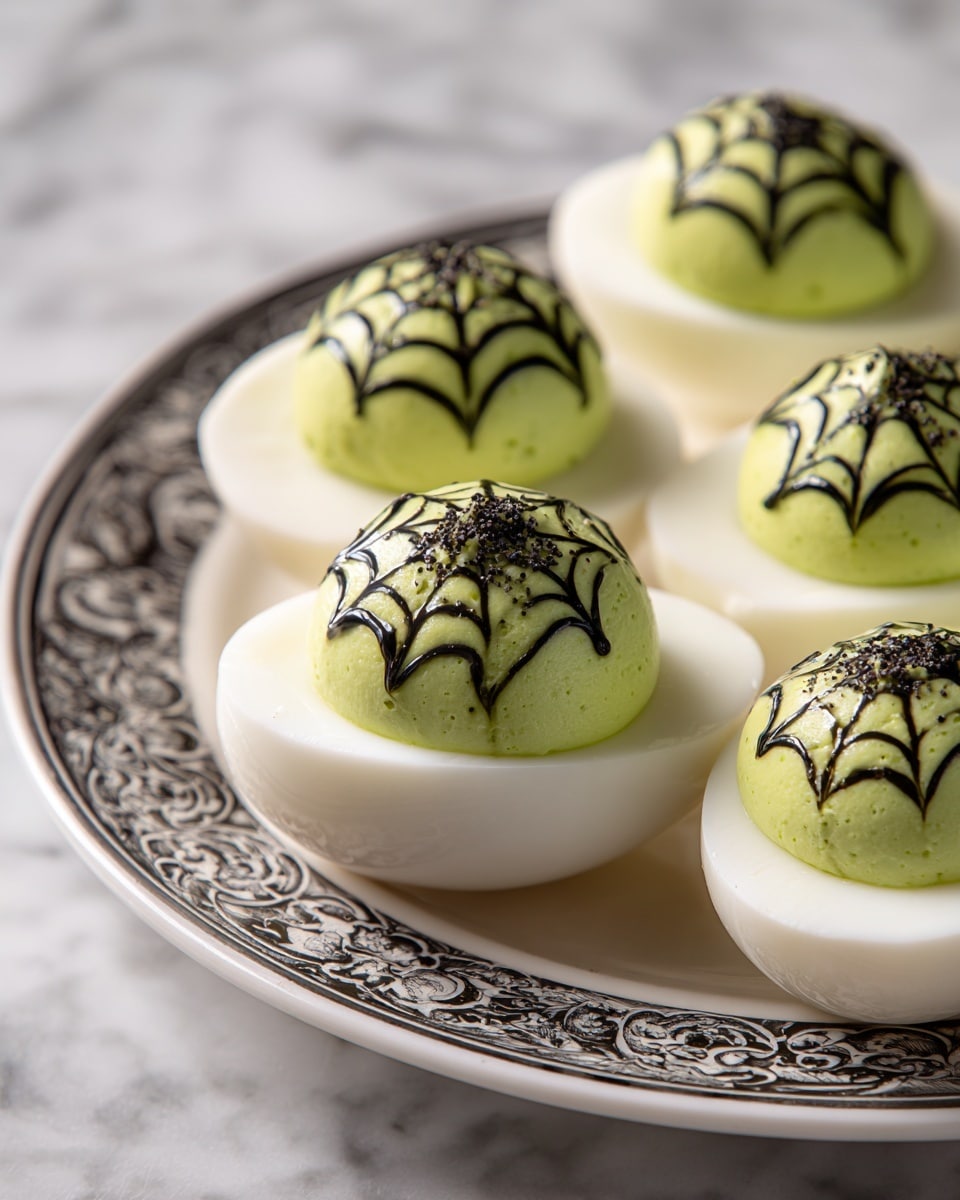
Garnishes
Choosing the right garnishes can turn these deviled eggs from neat to downright creepy-cool. Besides the black olive spiders and poppy seeds, consider fresh herbs like chives for a hint of color contrast or even a light dusting of smoked paprika to add a subtle smoky depth that complements the tangy yolk filling beautifully.
Side Dishes
Serve these spooky delights alongside other Halloween favorites such as pumpkin soup, roasted autumn veggies, or a tangy cranberry relish. The creamy deviled eggs balance richer or sweeter sides perfectly and keep your festive spread well-rounded and inviting.
Creative Ways to Present
Presentation is key, so why not get creative? Arrange your Spooky Spiderweb Deviled Eggs Recipe on a large black platter lined with fake spider webs for an extra creep factor. Or place them atop a bed of fresh greens to keep things classy yet playful. Small Halloween-themed picks or cocktail forks make grabbing these finger foods a breeze for your guests.
Make Ahead and Storage
Storing Leftovers
If you have leftovers, you can store them covered tightly in the refrigerator for up to 2 days. Keep in mind the marbled pattern on the egg whites stays intact well, but the filling is best fresh to maintain its creamy texture and bright flavor.
Freezing
Freezing deviled eggs is generally not recommended as the texture of the filling can become watery and separate once thawed. If you want to prepare parts ahead, you can freeze the cooked eggs (peeled but unfilled) before dyeing, then thaw and dye them later for best results.
Reheating
Deviled eggs are best served chilled or at room temperature. If you prefer them not too cold, remove from the fridge 15 minutes before serving. Avoid microwaving as this can scramble the yolks and ruin the texture completely.
FAQs
Can I use natural dyes instead of black food coloring?
Yes! For a more natural approach, try using activated charcoal or a purple cabbage boiled with baking soda to create a dark dye. These alternatives provide that spooky marbled look without artificial colors but may vary slightly in shade.
How do I make the spiderweb effect more defined?
Crack the eggshells more thoroughly but gently before dyeing. The more cracks you create without peeling the shell, the more intricate and distinct the web pattern will be once the color soaks in.
Can I use different toppings besides black olives and poppy seeds?
Absolutely! Think creatively — small capers, finely chopped scallions, or even tiny bits of roasted nori can resemble spiders or creepy crawlies to suit your spooky theme perfectly.
Is this recipe suitable for vegetarians?
Yes, this Spooky Spiderweb Deviled Eggs Recipe is naturally vegetarian and gluten-free, making it a fantastic and inclusive appetizer option for various dietary needs.
What’s the best way to transport these eggs for a party?
Use a deviled egg carrier or a shallow container lined with a damp paper towel to keep the eggs stable and moist during transport. Avoid stacking them to preserve the spiderweb design and decorations.
Final Thoughts
I cannot recommend enough how much fun and flavor the Spooky Spiderweb Deviled Eggs Recipe brings to any Halloween gathering. It’s a delightful combination of creative presentation and classic comfort food that’s sure to be a hit. Give it a try and watch your guests marvel at these ghoulishly gorgeous bites that taste just as good as they look!
Print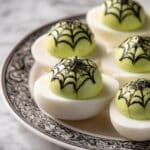
Spooky Spiderweb Deviled Eggs Recipe
- Total Time: 2 hours 35 minutes
- Yield: 24 deviled egg halves 1x
- Diet: Gluten Free, Vegetarian
Description
Create festive and spooky Spiderweb Deviled Eggs perfect for Halloween celebrations. These deviled eggs feature a striking marbled spiderweb effect achieved by soaking cracked boiled eggs in a black dye bath, then filled with a creamy, tangy yolk mixture and decorated with olive spiders or poppy seeds.
Ingredients
Egg Preparation
- 12 large eggs
- 1 tablespoon white vinegar (for boiling)
- Black food coloring or black gel dye (for dye bath)
- Water (enough to cover eggs and for dye bath)
Filling
- ½ cup mayonnaise
- 1 tablespoon Dijon mustard
- 1 teaspoon white vinegar
- Salt and pepper to taste
Decorations (optional)
- Black olives (sliced to resemble spiders)
- Poppy seeds
Instructions
- Boil the Eggs: Place 12 large eggs in a large saucepan and cover with water. Add 1 tablespoon white vinegar. Bring the water to a boil, then reduce heat and simmer the eggs for 10 minutes to hard boil.
- Crack the Shells: Remove the eggs from hot water and gently crack the shells all over without peeling them off. This helps create the spiderweb marbled effect during dyeing.
- Prepare the Dye Bath: In a separate bowl, mix black food coloring or gel dye with water to create a dark dye bath suitable for coloring the eggshells.
- Dye the Eggs: Submerge the cracked eggs fully into the black dye bath and refrigerate for at least 2 hours or overnight. This soaking process allows the dye to penetrate through the cracks, forming a spiderweb pattern on the eggshells.
- Peel the Eggs: After soaking, gently peel the eggshells off to reveal the spiderweb marbled effect on the egg whites beneath.
- Prepare the Filling: Slice each egg in half lengthwise and carefully remove the yolks into a bowl. Mash the yolks with ½ cup mayonnaise, 1 tablespoon Dijon mustard, 1 teaspoon white vinegar, and salt and pepper to taste until smooth and creamy.
- Fill the Eggs: Spoon or pipe the yolk mixture back into the egg white halves, filling the cavities neatly.
- Decorate: For a spooky touch, decorate the filled eggs with sliced black olives shaped like spiders or sprinkle poppy seeds on top to simulate spider decoration.
Notes
- For a more intense spiderweb design, crack the eggshells more thoroughly before soaking in the dye bath.
- Natural black dye alternatives include using activated charcoal or boiling purple cabbage with baking soda to create a dark dye for a natural option.
- Prep Time: 25 minutes
- Cook Time: 10 minutes
- Category: Appetizer
- Method: Boiling
- Cuisine: American
